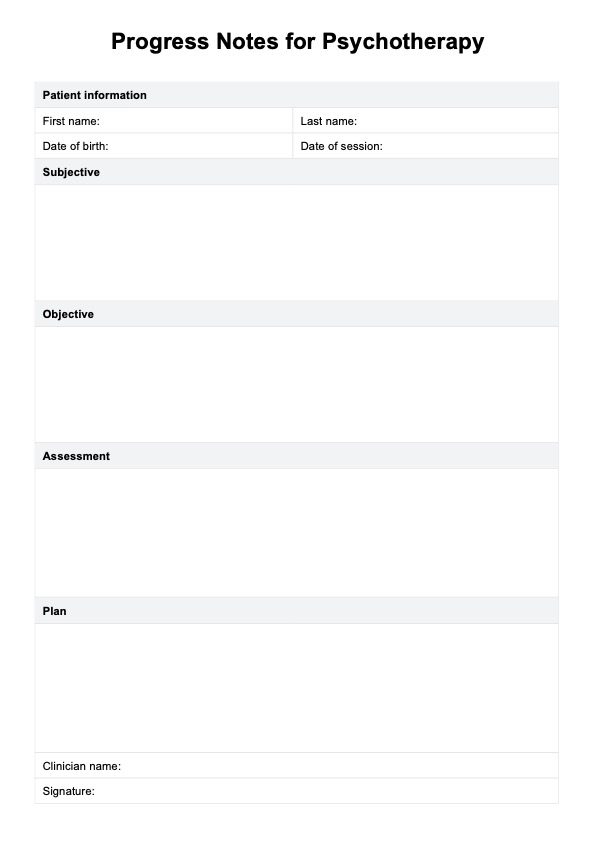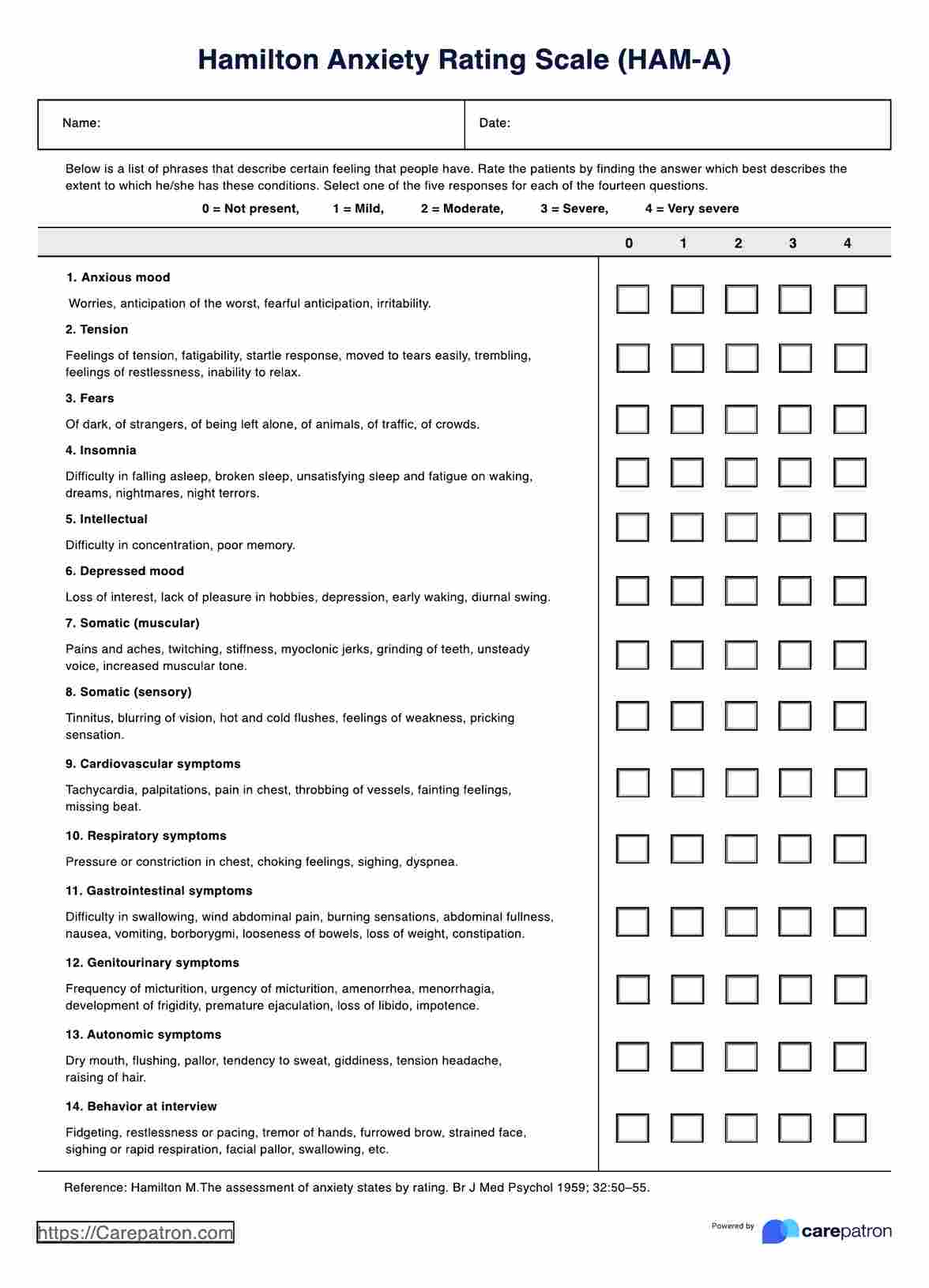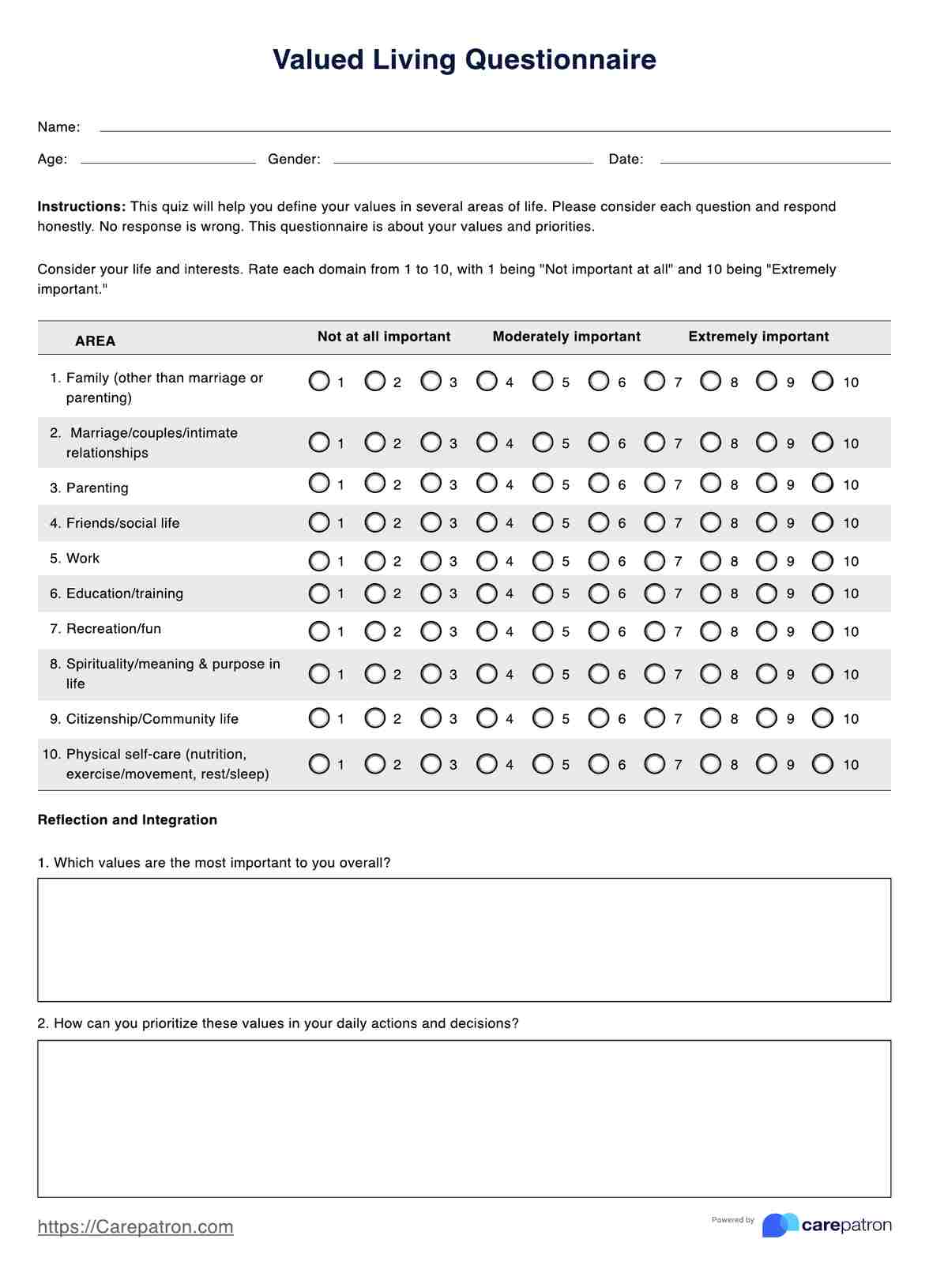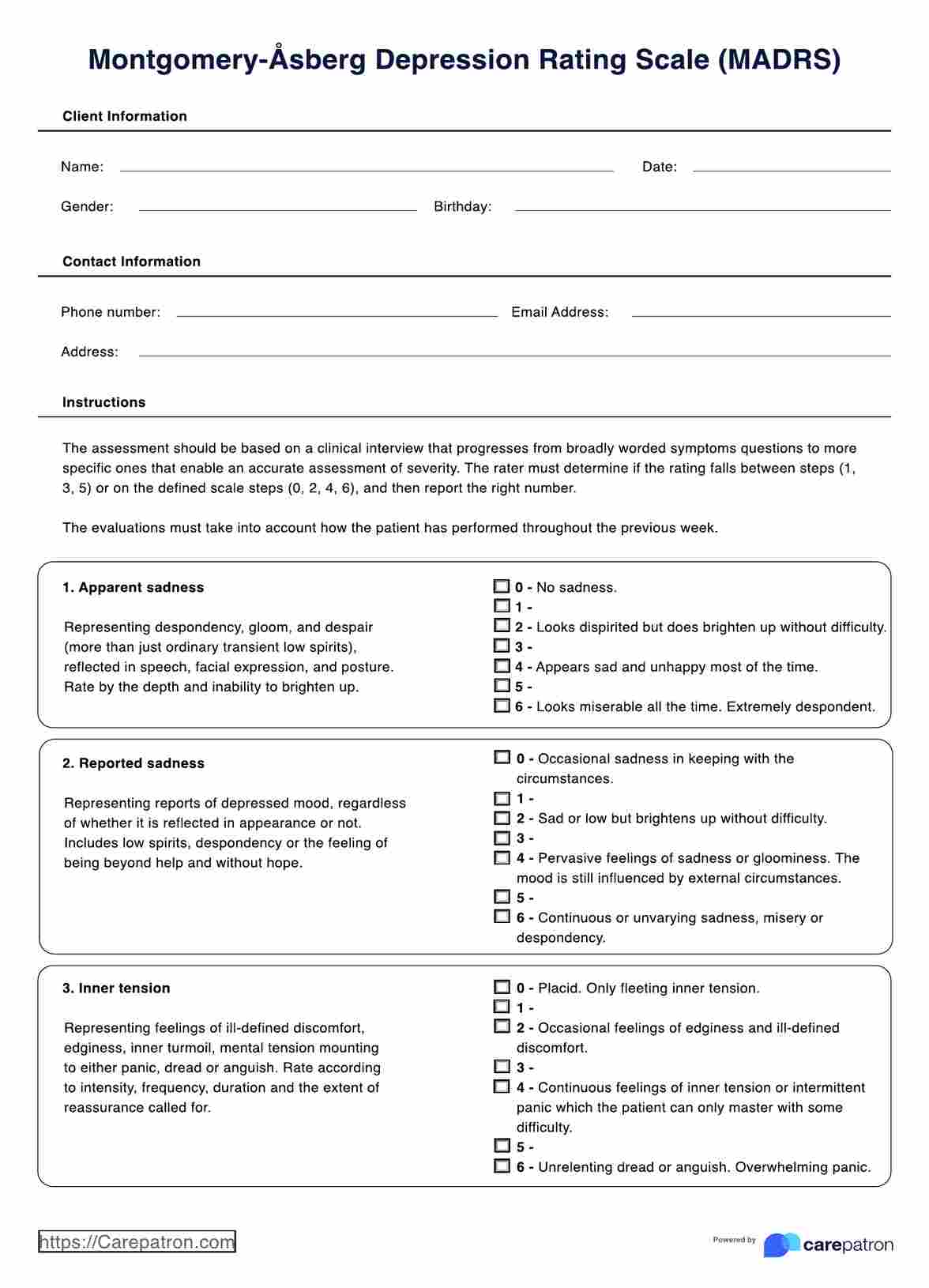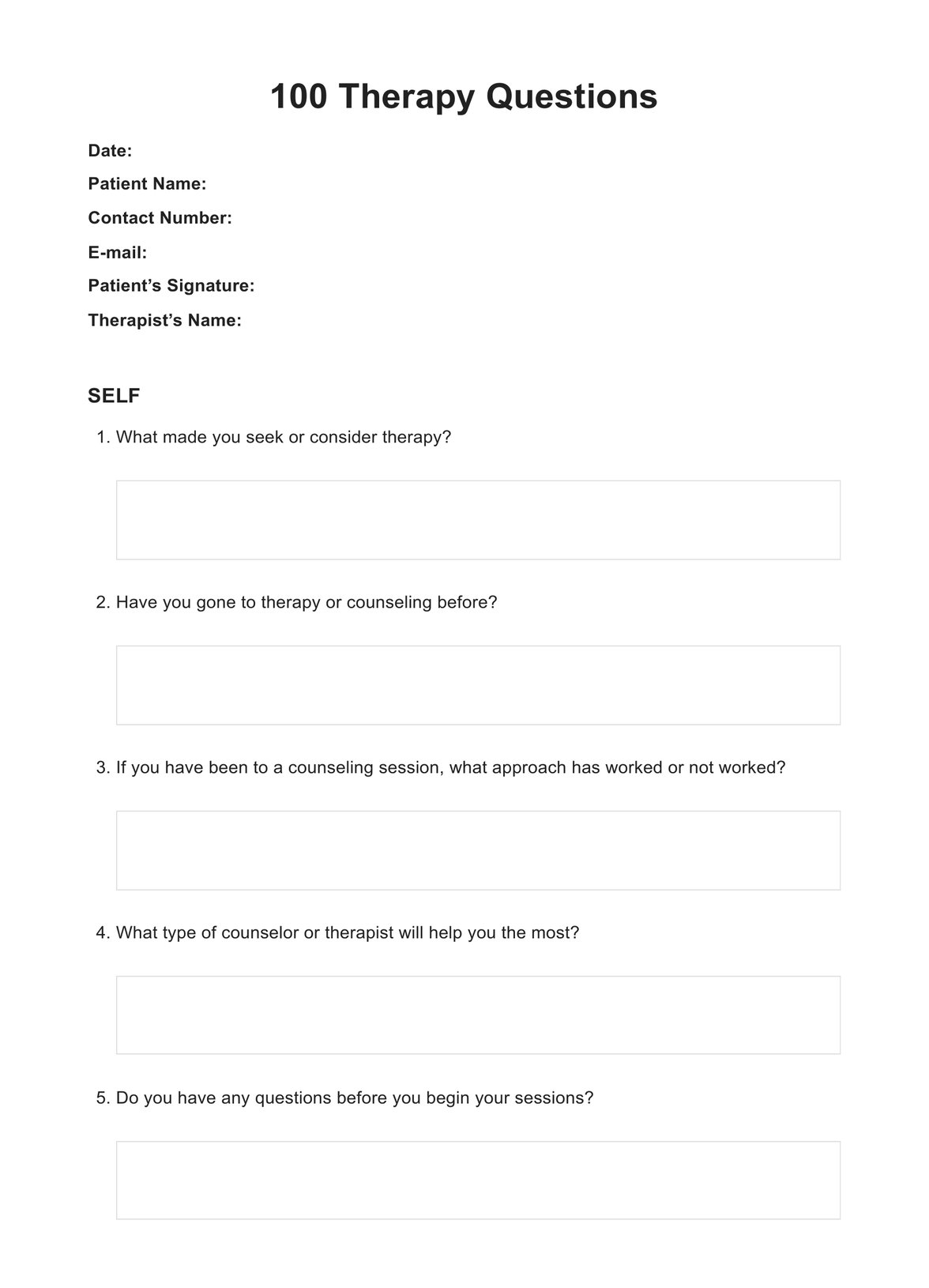EMDR Resourcing PDF
Download Carepatron's free PDF with examples of EMDR resourcing techniques. Explore different ways to support your clients with effective resourcing strategies.


What is EMDR therapy?
EMDR therapy, or Eye Movement Desensitization and Reprocessing, is a psychotherapy approach developed by Francine Shapiro in the late 1980s. It is primarily used to help individuals process distressing memories, traumatic experiences, and other psychological difficulties. Unlike traditional talk therapy, EMDR incorporates elements of cognitive therapy, exposure therapy, and stimulation to facilitate healing.
At its core, EMDR is based on the belief that traumatic experiences can become "stuck" in the brain, leading to a range of symptoms such as anxiety, depression, and PTSD (Post-Traumatic Stress Disorder). Through a structured EMDR protocol, EMDR helps individuals reprocess these memories, allowing them to integrate them into their life experiences healthier.
One of the key components of EMDR therapy is bilateral stimulation, which can be achieved through various techniques such as eye movements, hand tapping, or auditory tones. This bilateral stimulation is thought to mimic the natural processing that occurs during REM (rapid eye movement) sleep, helping to unlock the brain's natural healing processes.
EMDR therapy is recognized by organizations such as the American Psychological Association (APA) and the World Health Organization (WHO) as an effective treatment for trauma-related disorders. Research has shown that EMDR can significantly reduce symptoms, allowing individuals to experience relief and improved functioning.
EMDR Resourcing PDF Template
EMDR Resourcing PDF Example
Who can benefit from EMDR?
Eye Movement Desensitization and Reprocessing (EMDR) is a therapeutic approach that has shown efficacy in addressing various psychological issues. Individuals can benefit from EMDR therapy, especially those experiencing extreme trauma or distressing emotions. Let's delve into who specifically can benefit and why:
1. Individuals with complex trauma
Complex trauma refers to prolonged exposure to traumatic events, often occurring during childhood and involving interpersonal relationships. EMDR is particularly effective in addressing extreme trauma because it targets the underlying memories and beliefs associated with the trauma. By reprocessing these memories, individuals can experience a reduction in symptoms such as flashbacks, nightmares, and hypervigilance.
2. Those struggling with distressing emotions
EMDR is beneficial for individuals struggling with distressed emotions such as anxiety, depression, and anger. By targeting the memories and experiences contributing to these emotions, EMDR helps individuals process and integrate their feelings more healthily. This leads to a greater sense of emotional regulation and resilience in facing life's challenges.
3. Individuals seeking support from a protective figure
During EMDR therapy, individuals are guided by a trained therapist who serves as a protective figure throughout the process. This therapeutic relationship provides a safe and supportive environment for individuals to explore their past traumas and emotions. The presence of a trusted EMDR therapist helps individuals feel secure as they navigate through difficult memories and experiences.
4. Those striving to stay grounded in the present moment
EMDR incorporates techniques to help individuals stay grounded in the present moment while processing past traumas. This focus on the present helps individuals maintain safety and stability during therapy sessions. Individuals can effectively process traumatic memories without feeling overwhelmed by connecting with their present surroundings and sensations.
5. Individuals attuned to body sensations
EMDR therapy acknowledges the connection between mind and body, recognizing that traumatic experiences can manifest as physical sensations. By paying attention to body sensations during therapy, individuals can understand how trauma has impacted their physical well-being. EMDR therapists often incorporate bilateral stimulation, such as eye movements or tapping, to help individuals process and release these physical sensations.
What is EMDR resourcing?
EMDR Resourcing is a vital component of EMDR therapy, focusing on building inner resources to support individuals in processing traumatic memories and emotions effectively. This approach involves identifying and nurturing internal strengths, positive memories, and coping mechanisms to provide safety and stability during the EMDR process.
In EMDR Resourcing, individuals work with their therapist to develop a toolbox of internal resources that can be accessed during EMDR sessions. These resources can include memories of times when they felt safe and supported, the presence of a supportive family member or friend, or a sense of inner strength and resilience. By cultivating these resources, individuals can create a foundation of stability and resilience to aid in processing challenging memories and experiences.
One commonly used EMDR Resourcing technique is the Butterfly Hug, where individuals cross their arms over their chest and tap alternately on their shoulders while focusing on a positive memory or resource. This simple yet powerful technique helps individuals connect with a nurturing quality within themselves and fosters a sense of inner calm and reassurance.
The importance of EMDR Resourcing lies in its ability to enhance individuals' awareness of their internal resources and strengths, providing them with a helpful framework for navigating the EMDR process. By developing a strong foundation of internal resources, individuals can better cope with distressing emotions and memories that may arise during therapy sessions.
EMDR resourcing process
The EMDR Resourcing process is a structured approach aimed at helping individuals develop and access internal resources to support their journey through Eye Movement Desensitization and Reprocessing (EMDR) therapy. Let's explore the steps involved in this vital aspect of EMDR therapy:
1. Identifying internal resources
In this initial step, individuals and their therapists identify internal resources that serve as anchors of support during EMDR sessions. These resources may include positive memories, strengths, coping mechanisms, supportive figures, or safe place imagery. The goal is to identify resources that evoke calm, safety, and resilience.
2. Cultivating awareness
Once internal resources are identified, individuals engage in activities to cultivate awareness and strengthen their connection to these resources. This may involve mindfulness exercises, visualization techniques, or the Butterfly Hug method. Cultivating awareness helps individuals notice how these resources can affect their emotions and provide a sense of comfort and stability.
3. Forming a resource toolbox
As individuals become more aware of their internal resources, they work with their therapist to form a resource toolbox. This toolbox consists of a collection of resources that individuals can access when needed during EMDR sessions. The toolbox may include visualizations of safe places, affirmations, or supportive figures that individuals can call upon to help stay grounded and regulated during the therapeutic process.
4. Accessing resources during EMDR
Once the resource toolbox is formed, individuals are encouraged to access these resources as needed during EMDR sessions. This may involve revisiting positive memories, using calming techniques, or visualizing supportive figures. By accessing internal resources, individuals can navigate through the emotional processing of traumatic memories with greater ease and resilience.
5. Integrating resources into the healing process
Throughout the EMDR therapy process, individuals continue to engage with their resource toolbox, integrating these resources into their healing journey. Individuals who work through distressing emotions and memories can draw upon their internal resources to provide comfort, support, and safety. Integrating resources into the healing process enhances their resilience and ability to cope with challenging emotions.
Common resources used in EMDR
In EMDR therapy, various internal and external resources support individuals throughout the healing process. These resources help individuals establish safety, stability, and resilience as they work through traumatic memories and emotions. Let's explore some of the common resources used in EMDR therapy:
1. Safe place
The Safe Place technique guides individuals to visualize a location or environment where they feel completely safe and at ease. This could be a real or imagined place, such as a beach, forest, or cozy room. By creating and accessing this safe place during EMDR sessions, individuals can establish a sense of security and grounding to help them navigate challenging emotions and memories.
2. Supportive figures
Supportive figures are individuals from the individual's past or present who provide comfort, encouragement, and understanding. These figures could include family members, friends, mentors, or even fictional characters. Visualizing the presence of a supportive figure during EMDR therapy can evoke feelings of reassurance and strength, helping individuals feel supported as they process traumatic experiences.
3. Positive memories
Positive memories are past experiences that evoke feelings of joy, happiness, and accomplishment. These memories serve as a reminder of individuals' resilience and capacity for happiness, even in the face of adversity. By recalling and focusing on positive memories during EMDR sessions, individuals can counterbalance distressing emotions and foster a sense of hope and optimism.
4. Coping strategies
Coping strategies are techniques or activities that individuals use to manage stress, regulate emotions, and promote well-being. These strategies could include deep breathing exercises, progressive muscle relaxation, mindfulness meditation, or engaging in hobbies and interests. Incorporating coping strategies into EMDR therapy sessions helps individuals stay grounded and regulated, enhancing their ability to process traumatic memories effectively.
5. Future templates
Future templates involve visualizing positive outcomes and goals for the future. This technique encourages individuals to envision themselves overcoming challenges, achieving their aspirations, and living a fulfilling life. By focusing on future templates during EMDR therapy, individuals can cultivate a sense of hope and motivation, empowering them to move forward with confidence and resilience.
Commonly asked questions
Resourcing in EMDR refers to identifying and strengthening internal and external supports to help individuals feel safe and grounded during therapy sessions. It involves cultivating positive resources such as safe places, supportive figures, and coping strategies to enhance resilience and facilitate healing.
Dyadic resourcing in EMDR involves bilateral stimulation, such as eye movements or tapping, between the therapist and the client to enhance the development and strengthening of internal resources. This technique promotes a sense of connection and collaboration between the therapist and the client, facilitating the integration of positive resources into the healing process.
Individuals who have untreated psychosis, severe dissociative disorders, or are currently experiencing active substance abuse may not be suitable candidates for EMDR therapy. It is vital for individuals to have sufficient stability and coping skills to engage safely in the EMDR process.


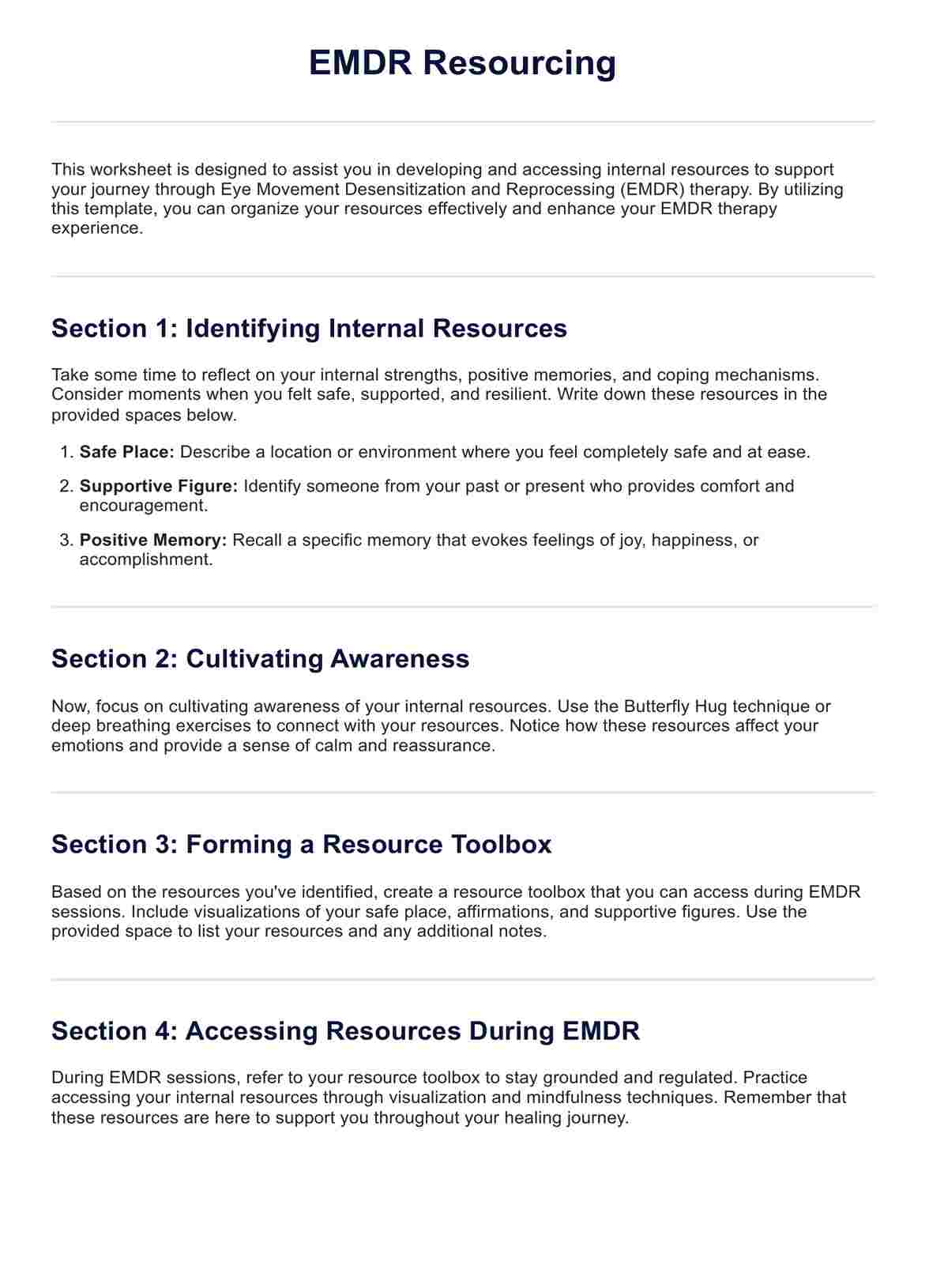
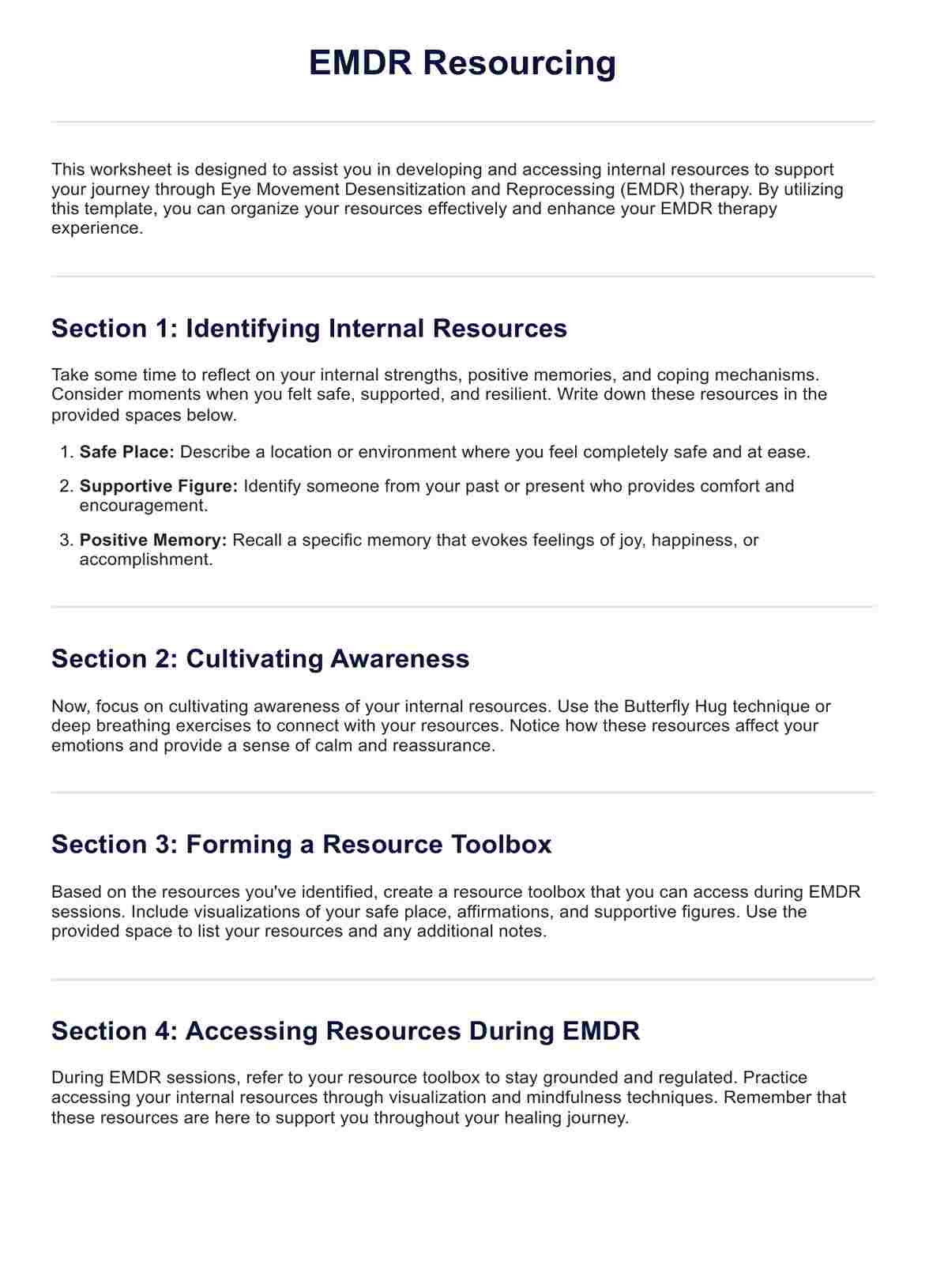
















-template.jpg)

























































































